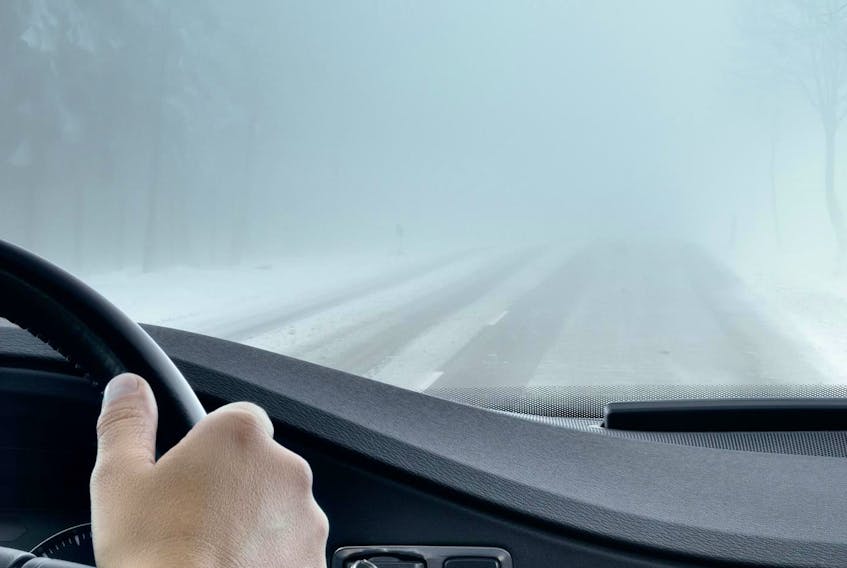Fog can become a major safety factor at this time of year when warm surfaces and cool air come into contact. Of course, those of us living near the ocean know this can happen at any time.
We have read about multi-vehicle crashes on heavily-travelled freeways in other parts of the country.
These horrible incidents brought fresh attention to the whole subject of driving in fog or reduced visibility.
Visibility, of course, plays a role. But, it is the difference in speed that creates the damage. Seeing something in time to avoid it is the key to everything we do at the wheel.
At 100 km/h we travel about 30 metres a second. It takes an alert driver about one-half second to recognize a problem and get from the accelerator to the brake — or about 15 metres.
Add another 38-40 metres to come to a complete stop — provided we are driving a vehicle with excellent brakes and properly inflated quality tires on a smooth, dry, high-friction surface.
But that is rarely the case. In the real world, the driver’s attention is divided into several areas. It will take a second longer to see and process a problem. That’s 30 additional metres.
If the vehicle is equipped with ABS the brakes will likely be applied to near-maximum effect, but if the surface is less than ideal — say slightly wet as in foggy conditions — even with ABS, look for vastly increased braking distances, likely double that required in the dry. Add it up — perfect conditions, alert driver, great brakes and good tires: 15 metres to see and act and 40 to stop — 55 metres or about 10 car lengths.
A more likely scenario: driver not paying strict attention, road less than perfect — 45 metres to see and act plus 75 or so to stop — 120 metres or about 24 car lengths, a difference of 14 car lengths.
That is the difference between coming to a safe stop and crashing smack dab into a stopped vehicle at only slightly reduced speed. In fact, likely hitting the stopped vehicle before even getting our foot to the brake pedal.
What’s this got to do with driving in reduced visibility? Driving too fast for conditions. On a clear day, if you are paying attention, you can see far enough ahead to identify a problem and avoid it.
On a dark night with clean, good headlights, you can see perhaps 75-90 metres down the road — barely enough space to see, act and stop at 100 km/h. But, in fog, heavy rain, snow or other poor conditions, vision could be as little five-10 metres.
Even if you were going only 50 km/h, you’d need all of that to get your foot from the gas to the brake — and have no space left in which to stop. In other words you would hit a stationary object — person or car at 50 km/h.
It’s the difference in speed that matters. If the object in front is travelling at the same or even slightly slower speed you’ll have time to do something. If it’s stopped and you’re going faster than 50 km/h or there is less visibility, the speed at which you will hit it will be even greater.
Clean glasses, windshield and headlights; strict attention to the job at hand, quality tires and a properly maintained vehicles (brakes) will all help. But the definitive answer — and there is only one with respect to driving in poor visibility — is to allow sufficient space.
Better lights, Scandinavian style rear fog lamps, four-way flashers, taking evasive action, etcetera, are all fodder for conversation, but the simple fact is that in order to avoid something, you have to see it in time to take action — and have enough distance remaining for that action to be effective.









